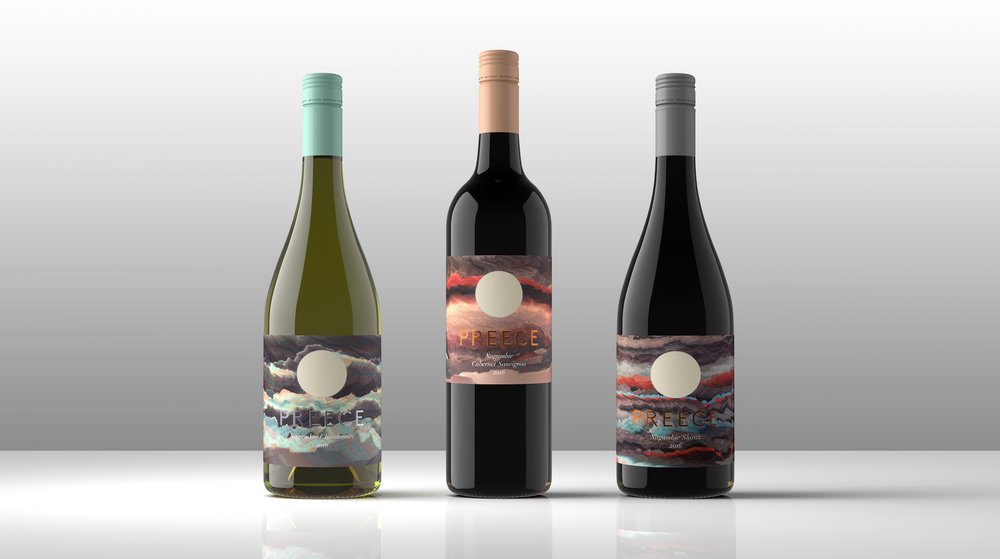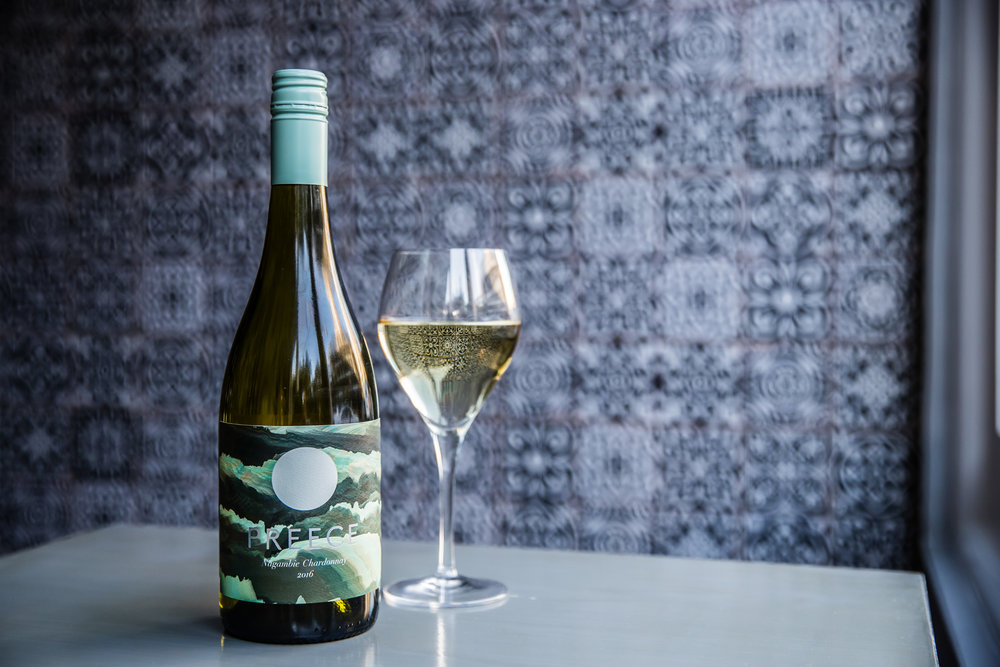
Data doesn’t sound inherently beautiful, does it? Looking at PREECE Wine of Mitchelton’s labels, though, you’ll notice gorgeous swirls of colors that look like dreamy sunsets or rolling waves in the ocean. And these labels are created not from elegant brushstrokes of a painter, but from algorithms—yes, algorithms.
So how is it done? We spoke with PREECE Wines of Mitchelton and design agency Future Days who teamed up for this project to discover how science combines with winemaking and design in these unique wine labels.

First off, how did the idea for this type of design come about?
PREECE + Future Days: Future Days design agency in Melbourne, Australia have been developing the approach of combining GenDesign with wine labelling, as the perfect marriage of the science and “nature” of winemaking.
The re-launch of PREECE wines by iconic winery Mitchelton, a wine historically known for its creativity and innovation, presented the perfect opportunity to harness the GenDesign approach to its fullest potential.

What were you able to achieve with GenDesign that bring the unique qualities to PREECE?
PREECE + Future Days: GenDesign allowed us to capture a contemporary and progressive design for PREECE that represents the future of winemaking through creative expression and graphic manifestation. The input of wine and vinification data allowed for endless permutations of an image to be output to create a one-off captured moment in the wine and the design as every bottle is one of a kind. No two labels are alike.
How are the fixed and variable data points determined?
PREECE + Future Days: The datasets used to generate the label designs link PREECE to a vintage, a region, a place and its history.
The variable data is specific to the vintage and the region. Data points captured included rainfall and monthly mean temperature for the site. The phenological data points are specific to the grape varietal and vineyard site—budburst, flowering, veraison and harvest dates were all captured.
The fixed data does not change year on year, and has relevance to the PREECE origins and its home at the Mitchelton winery. Points such as the founding winemaker’s birth year of 1903 and the height of the iconic tower at the Mitchelton winery at 55 metres were used as anchor points.
How do these data points translate onto the packaging?
PREECE + Future Days: The data points influence both the horizontal and vertical line frequency, along with colour intensity and variation. It captures vintage variation and delivers distinction in packaging and unique storytelling with every vintage release.
What challenges did you encounter while working on this project?
PREECE + Future Days: Working on a project like this becomes more of a combined effort involving everyone—the designers, marketing team, winemaker and printer. Coordinating information, timing and the sheer volume of the output files was the biggest challenge of this project.

You’ve currently created 31,000 unique front and back labels. How do you manage printing one-of-a-kind labels, both budget-wise and operations-wise?
PREECE + Future Days: Next year, the PREECE 2017 vintage release wines will see close to 200,000 individual labels printed across 6 wines.
Operations-wise, it’s not that simple to estimate the time required to output files and get them to the printers, when each label’s total file size runs into the gigabytes.
Budget-wise, coordinating printing with vintage changeover across the range allows for some cost efficiencies to be gained.
What do the designs achieve that other wine labels you’ve seen don’t?
PREECE + Future Days: We believe the designs are the ultimate true expression of “wine as a living thing” and this innovative design approach for PREECE redefines the wine industry tradition of numbering bottles as a special release for wine lovers.
The packaging is not only conceptually unique in that it visually represents the indigenous data of each PREECE wine, but each label is one-of-a-kind and non-repeatable.



















